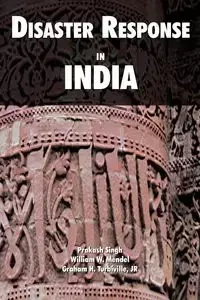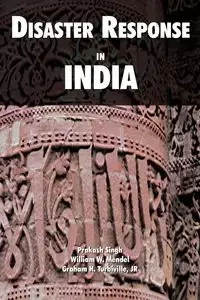Disaster Response in India - Singh Prakash
Disaster Response in India - Singh Prakash
AutorzySingh Prakash
EAN: 9781780391427
Symbol
603FGZ03527KS
Rok wydania
2011
Elementy
208
Oprawa
Miekka
Format
15.2x22.9cm
Język
angielski

Bez ryzyka
14 dni na łatwy zwrot

Szeroki asortyment
ponad milion pozycji

Niskie ceny i rabaty
nawet do 50% każdego dnia
Niepotwierdzona zakupem
Ocena: /5
Symbol
603FGZ03527KS
Kod producenta
9781780391427
Autorzy
Singh Prakash
Rok wydania
2011
Elementy
208
Oprawa
Miekka
Format
15.2x22.9cm
Język
angielski

First published in 2000. Abstract: "India is prone to natural and man-made disasters. The number has been increasing every year because of the mixture of various factors such as adverse weather, population growth, urbanization, and industrialization. How the Republic of India organizes for managing significant natural and man-made disasters, its capacity for effective response, and its ability to achieve unity of effort among governmental and non-governmental organizations are the elements of analysis here. This is of interest because India is an emerging world power; it is currently the second largest country in the world in population, and by 2050 it will have surpassed China as the largest. The number of Indians affected by disaster events shows a steady upward trend. Disasters have been taking a heavy toll of human and animal lives. Floods have proven to be the most devastating type of natural disaster in India, causing the maximum number of deaths and damage to property (cyclones have taken a heavy toll of lives and caused widespread devastation). At the same time, droughts affect a large segment of population, resulting in loss of employment and migration to other regions. Earthquakes have caused a comparatively lower amount of damage, but landslides are likely to increase in frequency in the coming years because of deforestation and over development on hillsides. Conurbation and industrialization have combined to create a dangerous synergy that now presents a significant hazard to India's people. In responding to these kinds of hazards, India's disaster management officials and professional humanitarians conduct disaster planning and response generally within a paradigm of three phases: Pre-disaster; Emergency (or Disaster Impact); Post Disaster (or Recovery). There is a strong emphasis in government policy and planning to encourage mitigation, i.e., actions taken prior to the occurrence of a disaster, including preparedness and long-term risk reduction measures."
EAN: 9781780391427
EAN: 9781780391427
Niepotwierdzona zakupem
Ocena: /5
Zapytaj o produkt
Niepotwierdzona zakupem
Ocena: /5
Napisz swoją opinię

